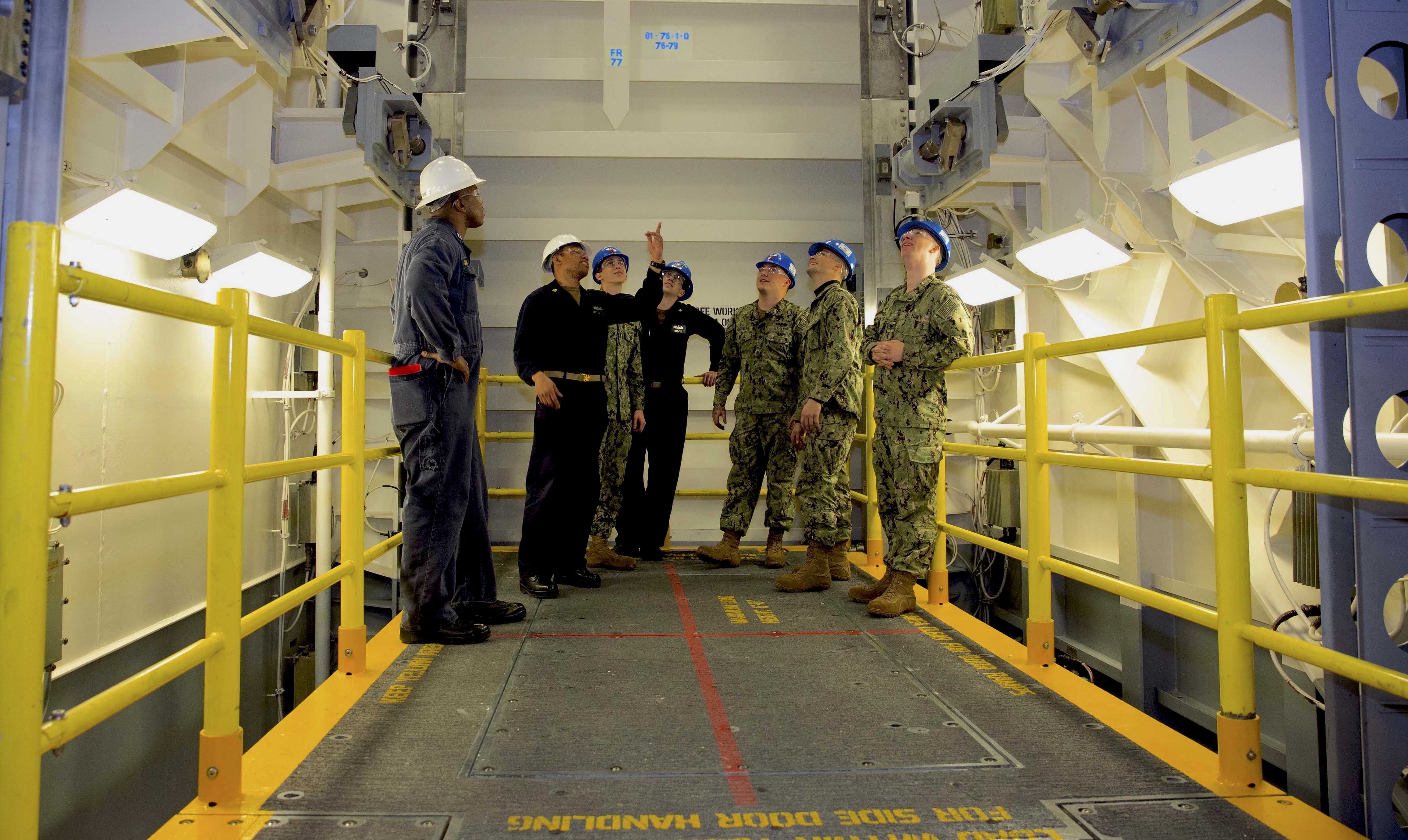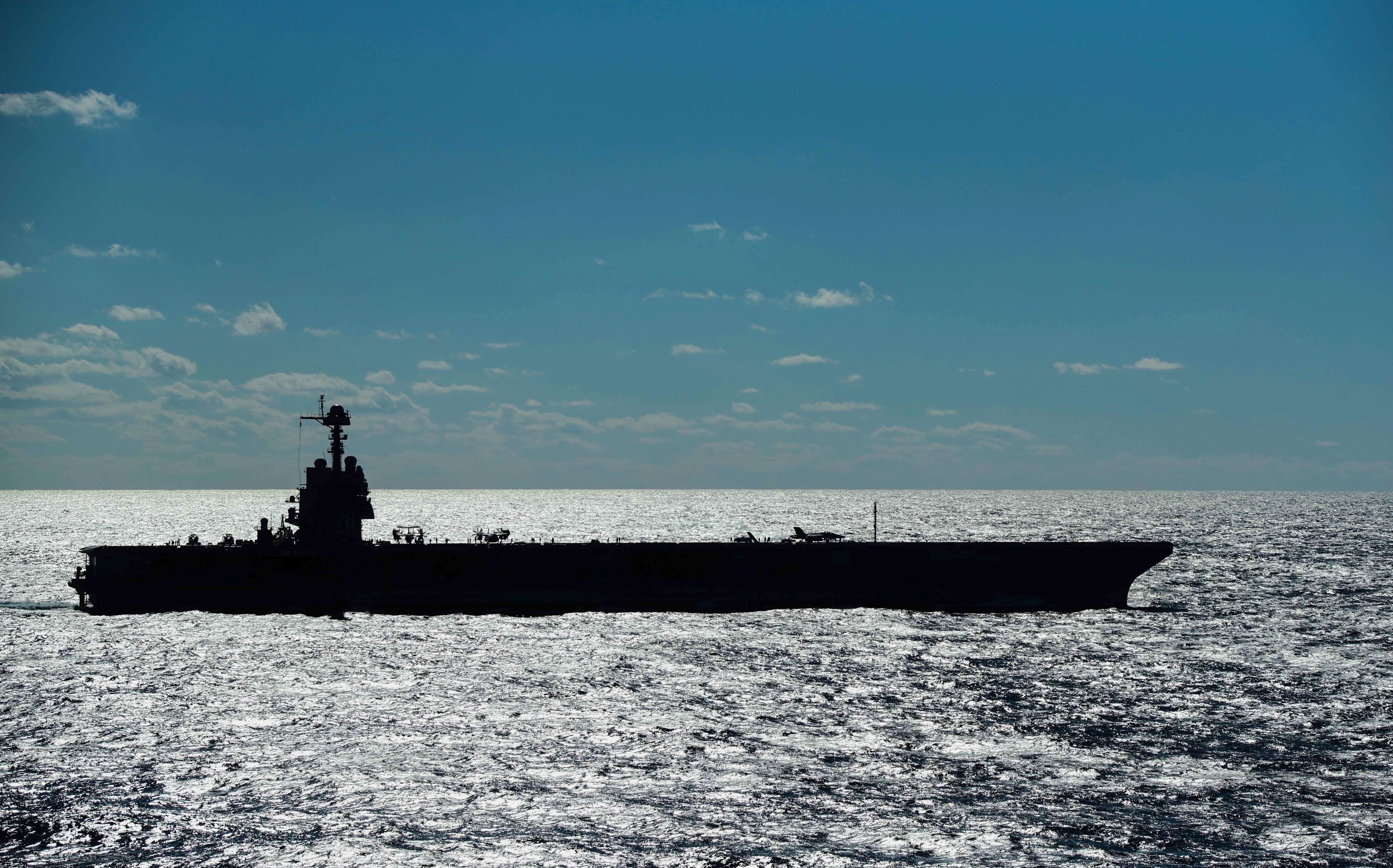
This post was updated with additional information from the Navy.
The Navy is revamping its approach to building weapons elevators on Ford-class aircraft carriers, after finding that each of the 11 unique elevators is generating its own unique set of lessons learned.
Since each of the 11 weapons elevators on the Ford-class carriers is has a slightly different design and function, the Navy found the lessons learned from building one elevator on USS Gerald R. Ford (CVN-78) don’t necessarily apply well to the other elevators on Ford, Rear Adm. Jim Downey, the Navy’s Program Executive Officer for Aircraft Carriers, said during a media briefing Wednesday. Instead, it’s become clear that elevator-by-elevator lessons learned need to be tracked separately and used in training the crews that will work on these Advanced Weapons Elevators on the future John F. Kennedy (CVN-79) and the rest of the carriers in the class.
“It’s really learning across ships that we get out of this. There is some learning within the ship, but most of the learning is across ships,” Downey said. “We’ve set up a trade school approach to make sure we’re taking those folks who work on [CVN] 79 and follow through the same training and actually work them through the lessons learned on Ford.”
Downey was speaking as the Navy and Newport News Shipbuilding certified Ford’s fifth overall advanced weapons elevator, which will be operated by the crew during the next underway period scheduled for May. This is the first lower elevator that goes all the way from the flight deck to the magazines deep in the ship, USNI News previously reported.
Another lower elevator, which will move ordnance from Ford‘s forward magazine, is on track to be certified and turned over to the crew by the end of summer, Downey said. The remaining five weapons elevators are on track to be certified before Ford undergoes full ship shock trials, scheduled to occur in the summer of 2021.
The Navy’s deliberate approach to finishing Ford‘s weapons elevators includes tackling the most complex problems first. As problems are solved and each elevator is tested and certified, the lessons learned are being folded into the shipyard’s training process, Downey said.
“As we finish Ford, those same folks are going over to work 79 and to train the other folks who are working 79 and follow on ships,” Downey said, in an effort to retain as much institutional knowledge as possible.
In some cases, Downey said, following this procedure means rescheduling work on the next carrier.
“Candidly, we’ve held up the work on 79 in the areas that haven’t proven out yet on Ford,” Downey said. “We’ve slowed down the release on 79, so we don’t have concurrent changes there.”

The experience building Ford’s elevators has also caused the Navy to rethink how other complicated systems are built across the class, Downey said. As an example, he said the Navy is now prepping CVN-79 to handle F-35C Lighting II Joint Strike Fighters while holding off on planning the installation of those same capabilities on CVNs 80 and 81.
The Navy originally wasn’t going to install the F-35C modifications to Kennedy until well after it delivered to the fleet, but language in the 2020 National Defense Authorization Act required the Navy to accelerate those plans. Understanding how to incorporate those capabilities into the ship during the construction phase may be a learning process though, so holding off on the work on 80 and 81 until 79 is complete allows for lessons learned to be collected.
“So we’re working on that to accelerate JSF into 79, to comply with that requirement, to complete the design and to hold off a little bit on 80, which was going to be first in new construction capability,” Downey said.





